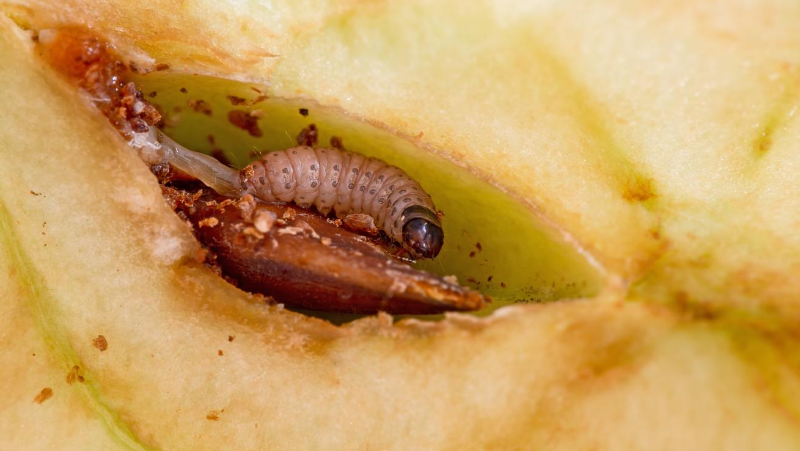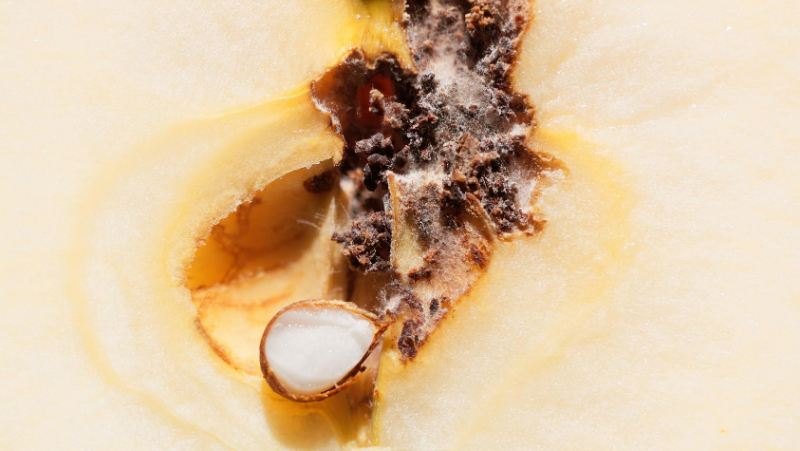Yates Account
Join now
Create a Yates account today!
Sign up to join the Yates Garden Club for monthly e-mails packed with seasonal inspiration, tips for success & exclusive promotions.
Plus if you’re a Garden Club member you can take part in the Yates Growing Community - a blog to share successes, get advice & win prizes in fun challenges along the way!

Forgot password
Enter the email address associated with your account, and we'll email you a new password.
Cydia pomonella

What are Codling Moths?
The number one pest for apple and pears, Codling moth larvae belong to a 20mm greyish brown moth which has alternating grey-brown bands across the wing tip. Eggs are laid during spring, onto leaves (usually near developing fruit).
A 'codlin' in very old-fashioned English is the tiny juvenile apple that forms at the base of an appleblossom; this is the moth's favourite target for laying eggs (which explains where the name came from).
The grub of the codling moth tunnels into the fruit, either on the side of the fruit or where the stem emerges. Larvae feed for 3-5 weeks before tunnelling out an exit hole, often dropping out of the tree onto the ground. The larvae find a hiding place in the leaf litter or soil under the tree (or crawl into a crevice in the tree bark) while they pupate. After this, they emerge as adults 12-21 days later...and the cycle is repeated.
Symptoms
There are two types of damage caused by the larvae of the codling moth. The first is a “sting” to the fruit where the larvae has penetrated the fruit surface but has died shortly after. The second is when the larvae has tunnelled into the fruit core and been able to feed in the seed cavity.
There might be a tell-tale lump of ‘frass’ (a collection of grub droppings on the skin) or if the grub has entered near the stem and eaten into the core there may not be any sign at all, until you cut open the fruit and there’s a grub inside.

Plants impacted
- Apples
- Pears
- Quinces
- Crabapples
Risk periods
- Spring, from petal fall
- Summer
Protection and Control
Spring flowers are the trigger for implementing codling moth control measures. As soon as the petals start to fall, it’s time to act to prevent infestation.
Yates Success Ultra Insect Control Concentrate, which is derived from beneficial soil bacteria, is a very effective way to prevent the codling moth grub from damaging the fruit.
Start spraying apple and pear trees every 14 days, from petal fall. There can be several generations of codling moth between flowering and harvest, hence the need for regular ongoing spraying.
For a traditional mechanical control method, you can tightly wrap corrugated cardboard bands around the branches and tree trunk. Around autumn when the grubs have finished feeding, some will head down the trunk to find a hiding place to build a cocoon. The idea is to trick them into cocooning inside the corrugated cardboard, which you remove and destroy at the beginning of winter. This will partly reduce the number of moths for next season, but that's the best you'll be able to to expect using this method, as it doesn't target grubs that have fallen onto the ground.
You can also use pheromone traps to target adult male moths. These traps are only partly effective as a control method, but they're excellent to indicate when the adults are flying, to prompt a timely application of Yates Success Ultra.
Picking up all fallen fruit is critically important to deny homes to the overwintering pupae at ground level.













Share
Share this article on social media